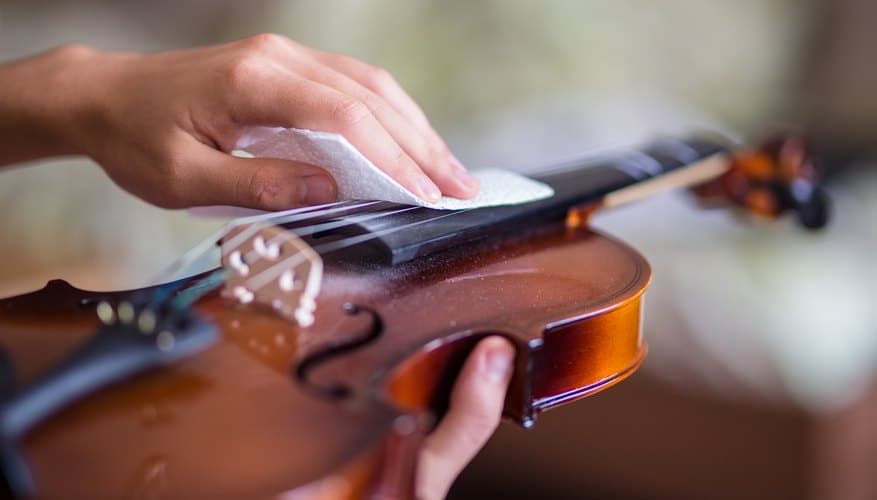
Did you know that the saxophone became a popular solo instrument around the time of World War I in the US, after which it was adopted in dance bands? Then, in the development of jazz and swing, it became one of the most important instruments for solos.
Saxophones, including baritone saxophone, have a rich musical history. If you’re considering learning to play the baritone sax, you might be curious about this history.
Not knowing everything you need to can also be stressful if you’re trying to decide whether playing the saxophone is right for you.
Fortunately, in this article, we’ll review everything you need to know about the baritone saxophone.
Finally, you can decide if you want to play this instrument and start playing your favorite jazz tunes. Read on to learn more.
The History of the Baritone Saxophone
In 1846, Adolphe Sax created the baritone saxophone. This Belgian instrument maker created the instrument as one of a 14-instrument family. Sax had a belief that the instruments within this family would provide a tonal link between brasses and woodwinds that would be useful.
He created a whole family of types of saxophones. There were two groups, each of which was made up of seven saxophones, ranging from the contrabass to the soprano.
Over time, as different musical instrument makers started making baritone saxophones, the notes they could play shifted. Eventually, the baritone saxophone became an instrument that has a high F# key.
The Elements of the Baritone Saxophone
Like other saxophones, the baritone saxophone is a conical tube made out of thin brass. The end is wider and flared so that it forms a bell, and the other end is smaller and connected to the mouthpiece. Like a clarinet, this saxophone type has a single-reed mouthpiece.
On top of the body, there’s a loop (which people sometimes refer to as the “pigtail”) within two tube pieces that are U-shaped to reduce it to a height that’s practical. These pieces are called the spit bow and the lower bow.
There are usually two different baritone saxophone types. One ranges to low Bb, while the other ranges to low A.
The mass of the baritone saxophone is relatively large, with it usually weighing somewhere between 11 and 20 pounds. Because of this, many harness-style neckstrap alternatives have been made.
With these, the weight isn’t on the neck, but instead on the shoulders of the saxophone player.
The Baritone Saxophone in Jazz Music
When people think saxophone, they usually think jazz. Sometimes, when people think jazz, they immediately think saxophone. So it’s no surprise that the sax is big in jazz music, having been used by many jazz performers as their primary instrument.
Since the mid-50s, many baritone saxophone soloists achieved fame, including Pepper Adams, Cecil Payne, and Gerry Mulligan.
Peter Brötzman was a big baritone sax soloist in free jazz, and Serge Chaloff was the first to achieve bebop soloist fame with this instrument.
In addition to the big soloists of the past, the baritone saxophone is often included in standard big band instrumentation.
Harry Carney, who played the baritone sax for the Duke Ellington band, was one of the pioneers of the instrument.
Some more recent cool cats who have played the baritone sax include Leo Pellegrino, Tim Berne, Ronnie Cuber, Brian Landrus, Gary Smulyan, Nick Brignola, Stephen “Doc” Kupka, and others.
And of course, Lisa Simpson, the older daughter in The Simpsons, plays the baritone sax, too.
The Baritone Saxophone in Classical Music
The saxophone isn’t only a jazz instrument, though. It’s also a standard instrument that makes up part of saxophone quartets, and it’s been used in orchestra, too. For example, in Gershwin’s An American in Paris and Rhapsody in Blue, he included this instrument.
Other examples include Sinfonia Domestica by Richard Strauss, The Wood Prince’s ballet music by Béla Bartok, Gruppen by Karlheinz Stockhausen. It was also in Krysztof Penderecki’s The Devils of Loudon, an opera.
The Baritone Saxophone in Other Music
This popular instrument has also been part of musical theater and is an important instrument in military bands. Many 1950s early rock-n-roll hits had the baritone saxophone in them prominently, especially Motown 1960s hits.
In soul, Latin, blues, and funk bands, the baritone saxophone is often in their horn sections. If you’ve ever gone out to see this type of music live, you’ve likely seen musicians playing the baritone saxophone.
Other groups that have had this instrument include Too Many Zooz and Fitz and the Tantrums. Baritone saxophonists in bands include Tower of Power’s Stephen Kupka and Morphine’s Dana Colley.
They also include Dave Matthews Band’s Leroi Moore and They Might Be Giants’s John Linnell.
As you can see, saxophone options in terms of music genre are quite broad, so you can enjoy playing the baritone sax in any of the above types of music we’ve mentioned.
Want to Learn the Baritone Saxophone?
Now that you’ve learned all about the baritone saxophone, you might be interested in this learning this instrument. In this case, you should look no further than the baritone saxophone music lessons available at the Sloan School of Music in Urbana.
We’re experts when it comes to learning music and instruments. We can teach you how to play a large variety of instruments, and we have woodwind lessons available.
To discuss your music education needs, contact Sloan School of Music today.






